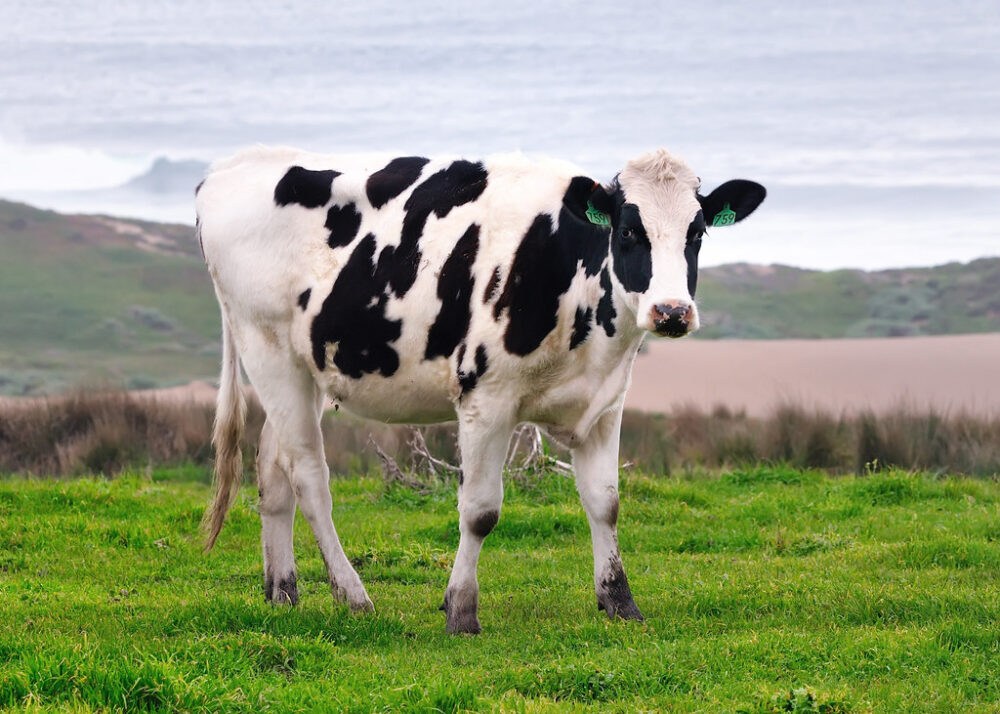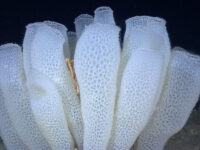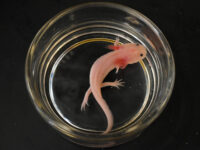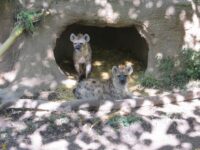From cow-print phone cases and jackets to “drink milk” posters to paintings illustrating herd-speckled landscapes, dairy cows are among people’s favorite creatures. Affection toward these docile animals is clear, but what do their lives really look like? It’s not all scenic red barns and grazing.
Dairy cows go through several major life transitions, and cattle are bred to have traits making them healthier, more comfortable, and better milk producers. A dairy cow’s capacity to stay healthy and return to a calm state during and after challenging transitions is known as dairy cow resilience. For cows, moving between barns, integration into a new social group, or even a change in diet can signify transition.
One major transition that all dairy cows experience is calving. Like any mammal, cows must first give birth to produce milk. Birth induces changes in hormone production: prolactin induces milk production, and oxytocin production causes milk to flow into the teat. Transitioning to be a milking cow is also a sensitive time for the animal since infectious diseases occur more often in the weeks following calving. Amongst physiological and hormonal changes, this event also often accompanies transition in where the animal lives on the farm.
Before giving birth, cows may live in group housing. Multiple cows can live together in free-stall housing or large cubicle-like stalls. Additional space can accommodate more animals, and conventional bedded-packed barns allow cows to roam without separation into stalls. Some farms also have pasture systems or dry-dirt lots depending on the climate. Housing styles vary in hygiene, floor space, and climate control. If insufficient, these factors can cause stress. Furthermore, when an animal gives birth, housing transitions can occur. New milking cows can be moved from group housing to an enclosure that aids in milk collection. This transition could mean moving to new group housing or tie-stall housing with a single stall for each animal.
Methods of milk collection depend on how cows are housed. In tie-stall barns, farmers can bring a milking unit, or small robotic milker, to the cow. The animal stays in one place while a pipeline carries milk from the animal to a collection tank. For group housing, milking parlors are typically used; cows go to be milked with robotic milkers throughout the day. A new version of collection for group housing is complete robotic milking, which allows cows to have the freedom to determine when to be milked. Animals frequent this robotic milking enclosure at their leisure, choosing when and how often they want to be milked. Each animal wears a transponder collar carrying information such as udder size, teat location, and even how much milk the cow produces. As farms adapt their technology to introduce new systems like robotic milking, housing changes during this limbo period can stress the animals.
Beyond their physical environment, social interactions and group changes can strain cows as well. Dairy cows are gregarious, and their social interactions lead to the establishment of dominance hierarchies and bonding with other conspecifics. When a new group is introduced, animals fight to establish dominant and submissive roles. Submissive animals often have less access to food, water, and comfortable places to lay, which decreases their resilience to additional social group change. Decreased food access can cause metabolic disorders, triggering a negative cycle of further health problems. In contrast, establishing bonds with other cows, according to research from the Laboratory of Herbivore Adaptation in France, leads to stress reduction.
Dairy cows are gregarious, and their social interactions lead to the establishment of dominance hierarchies and bonding with other conspecifics.
Farmers and researchers have studied how cows respond to environmental and individual changes. Researchers at the Wageningen Livestock Research Institute found poor animal welfare can lead to decreased milk production and loss of life due to illness. For this reason, farmers breed more resilient animals. Behavioral traits such as time spent eating and maintaining a daily routine reflect dominant and more resilient animals. Consistent patterns of variation in-ear temperature is a useful measure of animals able to maintain homeostatic balance during the transition. These traits indicating resilience improve the welfare of the animal and help maintain milk production.
A single dairy product can derive from so many lives. Creameries combine milk from a multitude of farms and cows, meaning each product contains milk potentially produced by thousands of animals. The next time you’re enjoying a cheesy treat, take a moment to appreciate these gentle giants, each who has experienced transition and conveyed resilience as they become dairy cows, bond with others in their group, and produce calves for the next generation of cows.
Sources:
Journal of Dairy Science (2018). DOI: 10.3168/jds.2018-14779
Animals (2017). DOI: 10.3390/ani7030016
Animal Behavior and Cognition (2017). DOI: 10.26451/abc.04.04.06.2017
Image courtesy of Flickr






